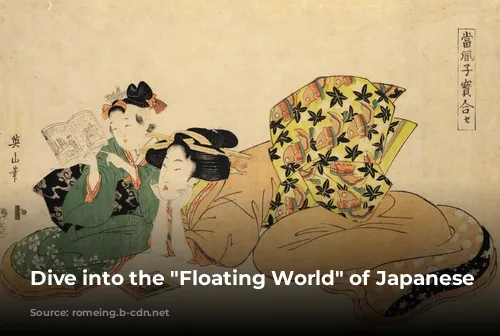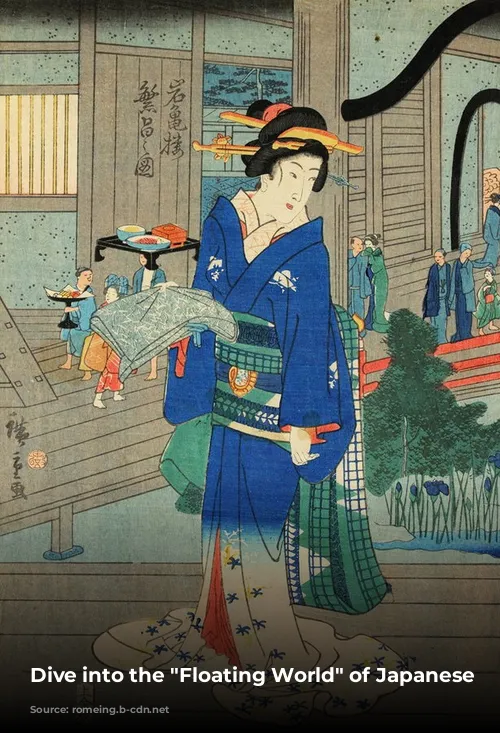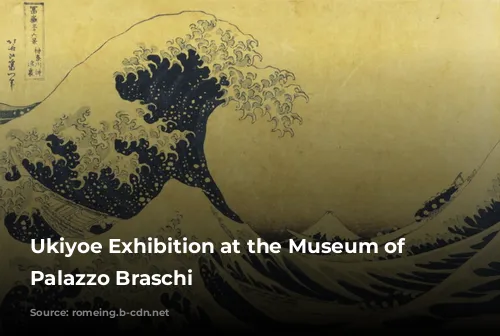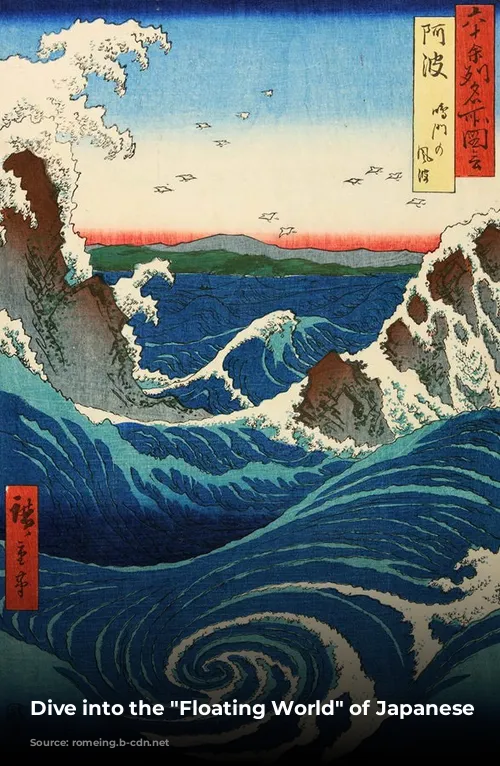Ukiyoe. Il Mondo Fluttuante, an exhibit showcasing over 150 masterpieces from 30 renowned Japanese artists, is a must-see for any art enthusiast. This captivating exhibition, currently on display at the Museum of Rome at Palazzo Braschi until June 23rd, offers a window into the vibrant and captivating world of Ukiyoe, a Japanese art form that flourished during the Edo era (17th-19th centuries).
The “Floating World” Unveiled
The term Ukiyoe, which translates to “images of the floating world,” reflects the transient nature of life in Edo-era Japan. This art genre captures the essence of everyday life, highlighting the pleasures and anxieties of a society undergoing rapid change.

Masters of the Floating World
The exhibition features works by some of the most celebrated Ukiyoe masters, including: Kitagawa Utamaro, Katsushika Hokusai, Tōshusai Sharaku, Keisai Eisen, and Utagawa artists. These artists used various mediums, from handheld scrolls and large format screens to brush paintings on silk or paper and polychrome prints on paper, to bring their visions to life.

Beyond Aesthetic Beauty: Exploring the Techniques and Subjects
The exhibition not only showcases the beauty of these artworks but also delves into the intricate techniques employed by Ukiyoe artists. You’ll have the opportunity to learn about the painstaking processes used to create these masterpieces.
The subjects depicted in Ukiyoe art provide a fascinating glimpse into the social and economic changes happening in Edo, a city that would later become Tokyo. While the elite once held sole control over luxury and cultural refinement, the emerging city class in the 17th century began to enjoy new levels of wealth and material comfort. Ukiyoe artists captured this shift, moving away from traditional landscapes and towards depictions of fashionable clothing, cityscapes, and worldly pleasures.

A Hidden Language: Moral Messages in a Censored World
While Ukiyoe emphasized aesthetic beauty, artists cleverly used their work to convey social messages that were often censored by the government. The mass production and distribution of Ukiyoe art allowed artists to reach a wider audience and share their perspectives. Utagawa Toyoharu and Kitagawa Utamaro are notable examples of artists who depicted women engaging in traditionally male activities like painting, calligraphy, and poetry, challenging societal norms.

A Bridge Between Cultures: The Impact of Ukiyoe
The influence of Ukiyoe extended far beyond Japanese borders. European artists like Van Gogh and Monet found inspiration in the bold colors and unique composition of Ukiyoe art, which was widely traded in the West. The exhibition showcases the strong connection between Ukiyoe and Italy, highlighting the role of Italian artists and diplomats in collecting and promoting this art form.
The Museum of Rome at Palazzo Braschi serves as a fitting venue for this exhibition, showcasing the enduring influence of Ukiyoe art on both Japanese and international culture. Don’t miss this chance to step into the “Floating World” and experience the beauty, artistry, and hidden messages of this fascinating art form.

